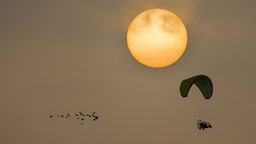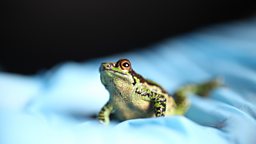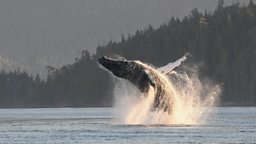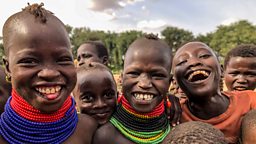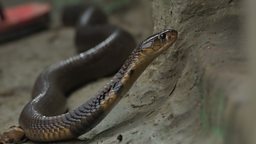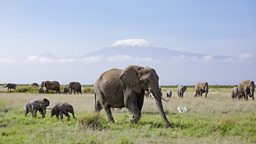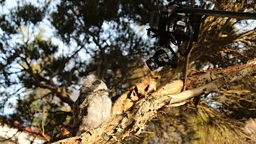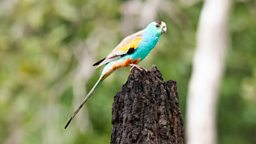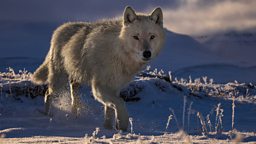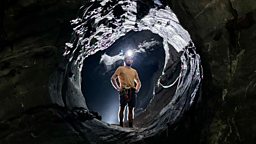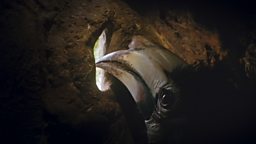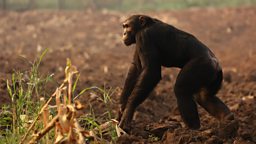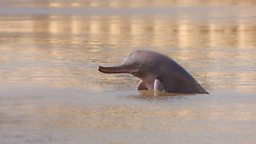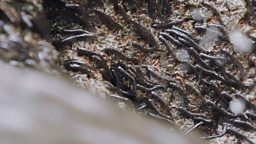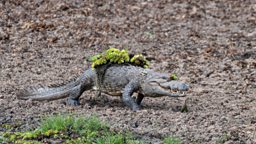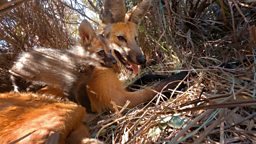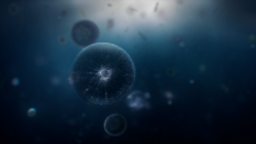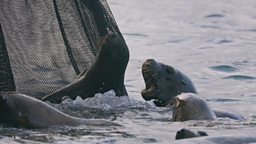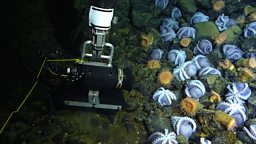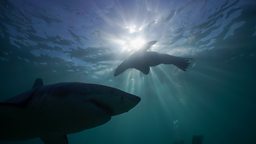Waiting to film a mugger crocodile ambush
By Abdullah Khan, wildlife cameraman for Freshwater
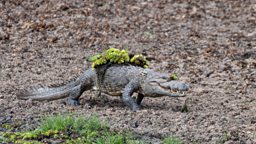
You would think that drinking from your water bottle is a simple task of daily life. But no, not when for weeks, you have been living in a hide six by six feet, waiting to film some incredibly skittish animals arrive at a waterhole – chital deer, who will run away at the sound of any unfamiliar noise. Drinking water became a strict three-step process. Number 1 - don’t bump into the camera equipment that is occupying 50% of the hide real estate. Number 2 - when opening the bottle, do it with surgical precision to avoid making even the smallest sound. Number 3, and probably most importantly, do not confuse the water bottle with the makeshift pee bottle.
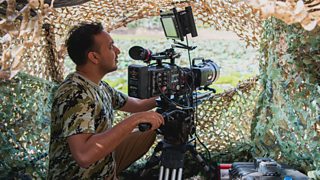
the crew failed to get the sequence the first two years of trying
This is just the tip of the discipline iceberg that I had to observe whilst filming mugger crocodiles hunting chital deer at a waterhole in Yala National Park, Sri Lanka for the Freshwater episode of Planet Earth III.
I was told beforehand that this would be one of the trickiest Planet Earth III shoots. For the crocodiles to successfully hunt chital deer, weather conditions needed to be bone dry. This was the only time deer would dare to drink at the mugger crocodile waterhole - one of the few remaining water sources around. But even half an hour of rain would produce safe puddles of water, allowing the deer to avoid drinking from the crocodile-infested waterhole for weeks at a time. This erratic and unpredictable weather pattern is the reason the crew failed to get the sequence the first two years of trying. In the third and final year, I was handed over the camera operator responsibility. The stakes couldn’t be higher – it was the team’s last chance.
It was no surprise that the weather behaved erratically in the third year as well. The shoot had to be delayed six times before the conditions in Yala were right. Finally, after months of postponements, I was in position – but little did I know how long I would need to spend in my hide to get the shot. Our schedule involved getting up at 4am, travelling to the hide before any deer or crocodiles had started their day and then waiting in the hope of any action. This was the regime for the entire five weeks of filming. I would end up spending 300 hours in that hide, and for the first 100 hours – almost two weeks – nothing happened. Some would say that keeping oneself motivated in such times would be an issue - but it wasn’t for me. I was excited about getting up each morning. I had the most advanced filming equipment for the job and I am mad about filming rare animal behaviour. But this didn’t stop me having nightmares – what if I missed the shot...
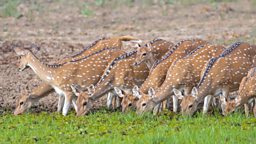
The human brain needs a 20-30 minute break after every 2 hours of concentration and I was up against one of the most patient hunters in the animal world, who had perfected its hunting technique over millions of years. But I had a plan. When there were no deer in sight I would rest my eyes for 5-10 seconds and then re-open them, eyes on the waterhole for the next 5-10 minutes. I would do this for an hour or two and find myself refreshed for the next couple of hours. A microsleep technique that started to work for me.
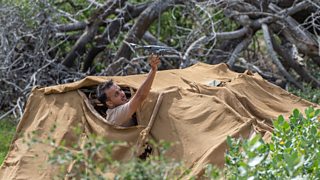
I am left only with awe and respect for such an intelligent and incredibly patient predator
Luckily for us, the dry weather remained and the number of deer arriving at the waterhole increased. Multiple muggers were lining the waterhole edge and each day the tension grew. With so many deer coming within striking distance, I was now faced with the dilemma of which mugger to focus on. Getting that right was extremely important because one attempt from a mugger would scatter the deer and they wouldn’t return until the following day. But all my time watching the muggers was about to pay off. It was with huge excitement and relief that I filmed my first successful mugger crocodile strike. From that moment on, the hunts came in thick and fast, and it was time to get another camera out of the bag, and try something never been done before – capturing a mugger crocodile hunt from the air, as well as from the ground.
We used drones to do this and it was a big challenge. The main issue was the number of hours the crocodiles would lie in wait - because our drone only had a 20-30 minute battery life. This meant I had to be spot on when predicting the timing of the hunt. As the deer began to arrive, I would hover the drone above the crocodile with the most potential, staying high enough to ensure I didn’t disturb predator or prey. The deer had to be within touching distance for the mugger to make its move... I waited… Eventually, one deer made a wrong move and the water exploded as it was dragged into the water by its attacker. All captured on the drone from above.
It is hard to develop feelings for a cold-blooded killer like the mugger crocodile but, after my time with them on this shoot, I am left only with awe and respect for such an intelligent and incredibly patient predator.
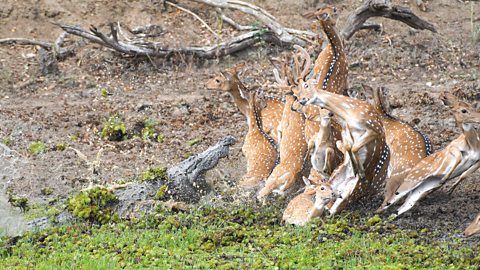
Mugger crocodile ambush
A ferocious predator lies in wait at a watering hole in south-east Sri Lanka.

